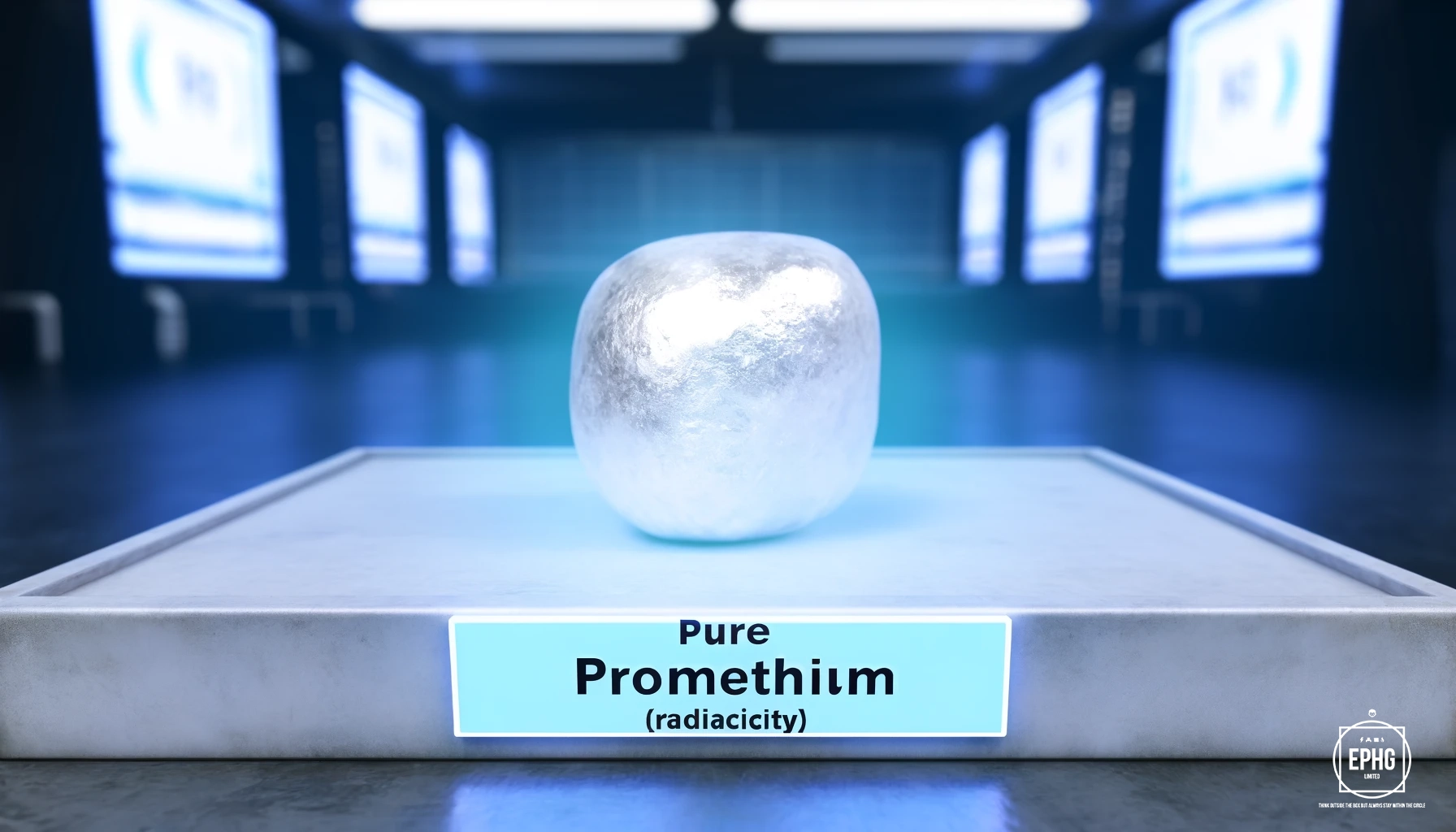Discovering Promethium: Applications in Science and Technology
Introduction to Promethium
Promethium, symbolized as Pm and atomic number 61, is one of the less commonly known elements in the periodic table primarily because it is a radioactive element with no stable isotopes. This intriguing element bridges the gap between the rare earth metals neodymium and samarium, nestled within the lanthanide series. Promethium's rarity and radioactivity make it a fascinating subject of study in both scientific research and technological applications.
The Discovery of Promethium

The existence of Promethium was theorized as early as the 1900s, but it wasn't until 1945 that it was definitively discovered by Jacob A. Marinsky, Lawrence E. Glendenin, and Charles D. Coryell. They identified the element through ion-exchange chromatography techniques following the separation of fission products of uranium fuel during nuclear experiments. The naming of Promethium is rooted in Greek mythology, inspired by Prometheus who stole fire from the gods to give to humanity, symbolizing the spark of scientific curiosity that led to its discovery.
Promethium in the Periodic Table
In the periodic table, Promethium occupies a unique position. As part of the lanthanides, it contributes to our understanding of the chemical and physical behaviors of rare earth elements. Its electron configuration sheds light on its reactivity and bonding characteristics, which are pivotal in various scientific explorations. To learn more about its role, visit our periodic table section.
Pure Promethium

Pure Promethium is a fascinating and rare radioactive element, notable for its lack of stable isotopes. This silvery-white metal is highly radioactive and glows a pale blue in the dark due to its radioactivity, which makes it one of the few self-luminous elements. In its elemental form, Promethium primarily emits beta particles, which are used in various scientific applications. Despite its inherent risks due to radioactivity, the element is carefully handled and utilized primarily in specialized fields like nuclear batteries and luminous coatings.
Scientific Significance of Promethium
Scientifically, Promethium's most notable feature is its radioactivity, which has been employed in several niche applications. It emits beta radiation, which, although a challenge to handle safely, offers opportunities in areas such as radiography and as a heat source in space probes where solar energy is insufficient.
Technological Applications of Promethium

The applications of Promethium are specialized due to its radioactive nature. It is used in:
- Luminous Paint: Promethium is used in the production of luminous paint for watches, aircraft gauges, and compasses, where its radiation is utilized to provide continuous light without the need for external energy sources.
- Nuclear Batteries: Known as radioisotope thermoelectric generators (RTGs), these batteries convert the heat released by the decay of Promethium into electricity, providing long-lasting power sources for space missions, lighthouses, and medical devices.
- Research and Medical Applications: In the field of research, Promethium-147 is used in the study of the behavior of neutrons in reactors due to its ability to absorb neutrons.
The Economic and Environmental Impact of Promethium
Given its scarcity and the complexity involved in its production, Promethium is expensive and challenging to extract and refine. However, its potential in high-value, low-volume applications like space exploration and specialized instrumentation ensures its place in the market. Environmentally, handling Promethium requires stringent safety protocols due to its radioactivity, necessitating significant investment in protective measures to prevent contamination and ensure safe disposal after its useful life.
How Promethium is Produced
Promethium is not mined like typical metals due to its extreme rarity and radioactivity; instead, it is primarily obtained as a by-product of uranium fission in nuclear reactors. The process involves capturing the fission products, followed by a complex chemical separation to isolate Promethium. This method ensures a controlled environment where the radioactivity of Promethium can be managed safely.
Current Uses of Promethium

Today, promethium is used primarily for its radioactive properties in a few niche applications:
- Luminous Paint: As mentioned earlier, promethium is used in the production of luminous paint for dials and displays that need to be visible in the dark without external power sources.
- Nuclear Batteries: Promethium powers long-lasting nuclear batteries used in spaceships, pacemakers, and undersea equipment.
- Research Purposes: In scientific research, promethium is used in the study of radiation effects and for various types of sensors due to its beta emission properties.
The Future of Promethium

The potential applications of promethium are expanding as research into radioactive materials progresses. Future innovations could include:
- Advanced Medical Treatments: Utilizing its radioactive properties for treatments in oncology, particularly in targeted cancer therapies where precise radiation can be used to destroy cancer cells without harming surrounding healthy tissues.
- Enhanced Energy Solutions: Further development of promethium-based batteries could lead to more efficient power solutions for remote or high-risk environments such as outer space or deep-sea explorations.
- Environmental Monitoring: Use in high-sensitivity sensors for monitoring pollutants and other environmental factors.











